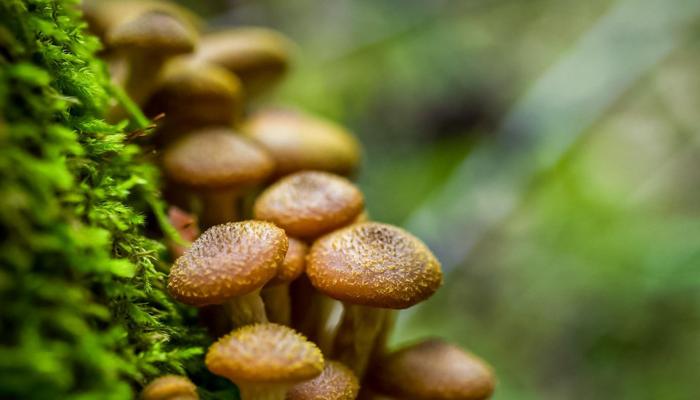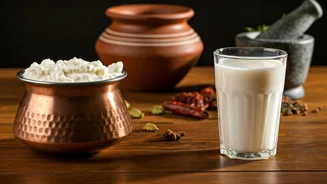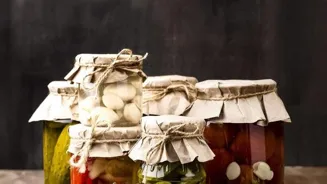Dive into the captivating world of fungi with 7 surprising facts. From their kingdom to medicinal wonders, fungi are truly fascinating!
Namaste, readers! Today, we're diving into a world often overlooked,
yet teeming with surprises - the kingdom of fungi. Forget fancy restaurants and exotic dishes for a moment.
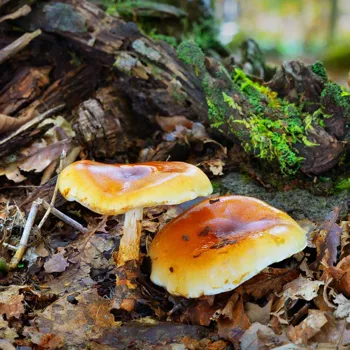
We're talking about the real deal, the fascinating, sometimes bizarre, and utterly essential world of mushrooms, molds, and yeasts. Prepare to be amazed by these seven surprising facts that will change the way you see fungi forever!
Fungi are not plants but a vast, diverse kingdom
First, let's bust a common misconception. Fungi aren't plants! They belong to their very own kingdom, distinct from both plants and animals. This kingdom is vast and diverse, containing more species than plants do. Think of all the greens around you, and then imagine even more varieties of fungi.
They have unique cell structures and obtain nutrients in a completely different way than plants. What makes them so different? Plants use photosynthesis to make their food from sunlight, water, and carbon dioxide.
Fungi: vital recyclers breaking down organic matter for ecosystem balance
Fungi, on the other hand, are heterotrophic organisms, meaning they get their food by absorbing organic matter from their environment. They are like tiny recyclers, breaking down dead plants, animals, and other organic materials. Without fungi, the world would be piled high with decaying matter!
So, next time you see a mushroom sprouting in the forest, remember it's not just a pretty sight. It's a vital part of the ecosystem, working hard to keep everything in balance. That decaying log you walk past? Fungi are already at work, slowly returning it to the soil.
They are the unsung heroes of decomposition, quietly performing a crucial task that keeps our world healthy.
Largest living organism is a fungus in Oregon, spanning 2,200 acres
Secondly, did you know that the largest living organism on Earth is a fungus? Yes, you read that right! It's not a blue whale or a giant sequoia; it's an Armillaria ostoyae fungus, also known as the "humongous fungus" which is found in Malheur National Forest in Oregon, USA.
This single organism covers an area of over 2,200 acres, which is roughly the size of 1,665 football fields! Imagine that! A single, living organism sprawling across that much land. It's truly mind-boggling to think about the scale of this fungal giant.
Underground fungus mycelium spreads, kills trees, dwarfs whales
The main body of the fungus is actually underground, a network of thread-like structures called mycelium. The mushrooms you see popping up are just the fruiting bodies, like apples on a tree. The mycelium spreads through the soil, absorbing nutrients and connecting to tree roots.
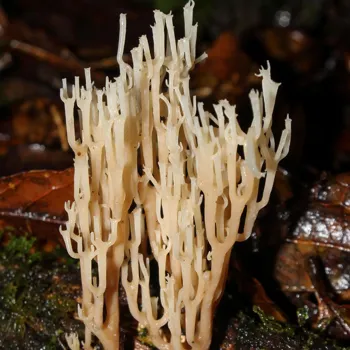
While it might sound harmless, this particular fungus is unfortunately a parasite, attacking and killing trees as it spreads. Even so, it’s a testament to the remarkable resilience and expansive nature of fungi.
So, next time you marvel at the size of a whale, remember there's a fungus out there that dwarfs even the largest animal on our planet! It really puts things into perspective.
Fungi are vital recyclers, breaking down organic matter for soil nutrients
Thirdly, fungi are master recyclers. They play a crucial role in breaking down organic matter and returning nutrients to the soil. Think of them as nature's cleanup crew, constantly working to decompose dead leaves, fallen trees, and even animal remains.
Without fungi, the world would be cluttered with organic waste, and nutrients would be locked away, unavailable for plants to use. Their impact on soil health and nutrient cycling is immense, making them essential for the health of ecosystems.
Fungi essential for nutrient recycling in ecosystems
They secrete enzymes that break down complex organic molecules into simpler substances that plants can absorb. This process is vital for plant growth and overall ecosystem productivity.
Fungi essentially unlock the nutrients trapped in dead organic matter, making them available to the next generation of plants. Because of their ability to recycle the nutrients trapped within dead matter, fungi are absolutely essential in the working nature.
So, next time you see a mushroom breaking down a decaying log, appreciate the important work it's doing. It's not just decomposing something; it's actively contributing to the cycle of life.
Fungi thrive in extreme environments with unique adaptations
Fourth interesting fact is that some fungi can survive in extreme environments. They can be found thriving in radioactive areas, deep sea vents, and even outer space.
Some species have developed remarkable adaptations that allow them to withstand conditions that would be lethal to most other organisms. For example, certain fungi can actually use radiation as an energy source, a process known as radiosynthesis.
Others thrive in the intense pressure and darkness of deep-sea vents, where they play a role in the local ecosystem.
Fungi survive harsh conditions, aiding bioremediation efforts
And, incredibly, some have even been shown to survive exposure to the harsh conditions of outer space, proving their incredible resilience. This adaptability has significant implications for fields like bioremediation, where fungi can be used to clean up polluted environments.
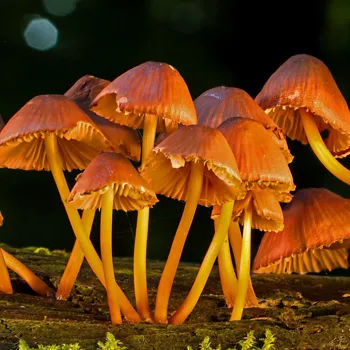
Their ability to withstand extreme conditions makes them valuable tools for tackling environmental challenges. These fungi are true survivors, pushing the boundaries of what we thought was possible for life on Earth.
Their existence highlights the incredible diversity and adaptability of the fungal kingdom.
Fungi produce life-saving medicines like penicillin and cyclosporine
Fifth observation, fungi have created powerful medicines. The discovery of penicillin, the first antibiotic, was a game-changer in medicine. It saved countless lives by effectively treating bacterial infections. Penicillin is derived from the Penicillium mold, a type of fungus.
But penicillin isn't the only medicine derived from fungi. Cyclosporine, an immunosuppressant used in organ transplants, is derived from a fungus called Tolypocladium inflatum. This medicine helps prevent the body from rejecting the transplanted organ, making transplants possible for many patients.
Researchers explore fungi for medicinal compounds, promising new treatments
Researchers are constantly exploring the fungal kingdom for new medicinal compounds. They are investigating fungi for potential treatments for cancer, Alzheimer's disease, and other ailments. The possibilities are vast and promising.
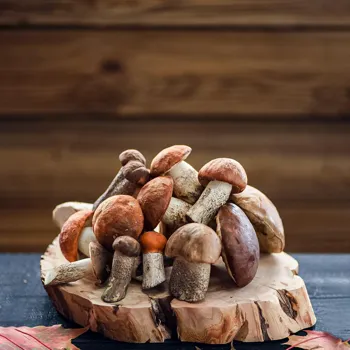
These medicinal properties were accidental, we can only imagine the possibilities when working on fungi and its potential beneficial factors. The fungal world holds immense potential for developing new life-saving drugs, and ongoing research is uncovering even more of their hidden medical secrets.
Fungi's crucial role in food production, such as bread, beer, wine, and cheese
Lastly, fungi are essential for the production of many important foods. Without yeast, which is a type of fungus, we wouldn't have bread, beer, or wine. Yeast ferments sugars, producing carbon dioxide that makes bread rise and alcohol that gives beer and wine their characteristic kick.
Many types of cheese rely on fungi for their unique flavors and textures. For example, Penicillium molds are used to produce blue cheese, Roquefort, and Camembert. Without these fungi, these famous cheeses would be very different, or wouldn't exist.
Fungi's impact on the culinary world is undeniable.
Fungi in fermentation enhance flavor and health benefits in Indian foods
Even some traditional Indian foods rely on fermentation processes involving fungi. The process creates more flavour and adds healthy bacteria to that delicious food. These fungi are carefully selected and cultivated to ensure safe and delicious food production.
So, next time you enjoy a slice of bread, a piece of cheese, or a cool beer, remember to thank the fungi that made it possible. They are the unsung heroes of our plates!
